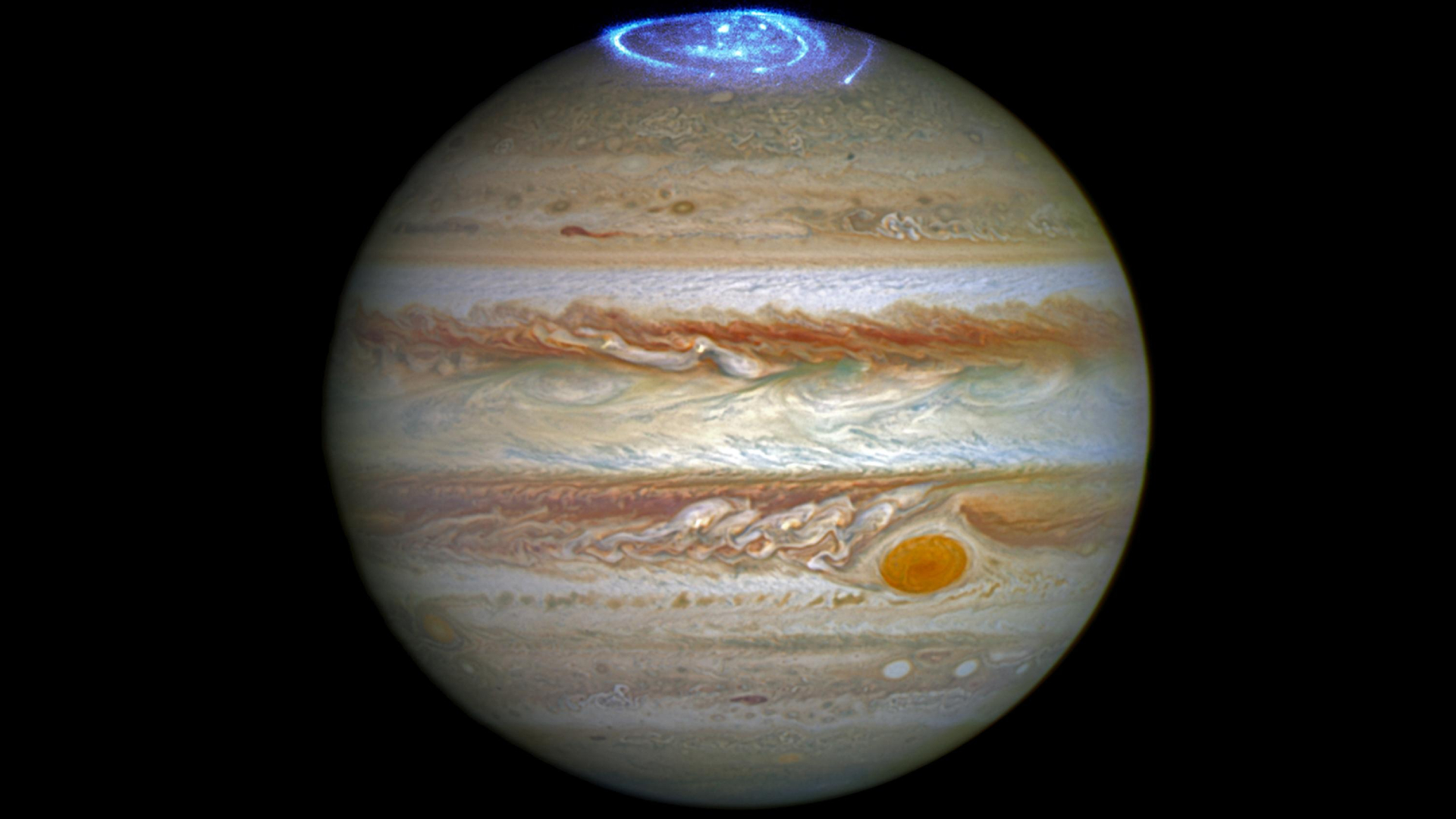Jupiter, the largest planet in our solar system, is a gas giant composed primarily of hydrogen and helium. It is known for its Great Red Spot, a massive storm that has been raging for centuries, and its many moons, including the four largest moons discovered by Galileo Galilei.
Physical Characteristics
- Size: Jupiter is more than 11 times the size of Earth and has a mass more than 300 times that of our planet.
- Composition: The planet is primarily composed of hydrogen and helium, with smaller amounts of methane, ammonia, and water vapor.
- Great Red Spot: This iconic storm is a massive anticyclone that has been observed for centuries. It is estimated to be larger than Earth and has been spinning for hundreds of years.
- Magnetic Field: Jupiter has a powerful magnetic field, the strongest in the solar system. This field is generated by the planet’s rapid rotation and its liquid metallic hydrogen core.
Moons of Jupiter
Jupiter has 80 known moons, making it the planet with the most moons in our solar system. The four largest moons, discovered by Galileo Galilei in 1610, are known as the Galilean moons:
- Io: The innermost Galilean moon, Io is a volcanically active world covered in sulfurous deposits.
- Europa: Europa is a frozen world with a smooth, icy surface. Scientists believe that there may be a subsurface ocean beneath Europa’s icy crust, making it a prime target for the search for extraterrestrial life.
- Ganymede: The largest moon in the solar system, Ganymede is larger than the planet Mercury. It has a complex geological history, with evidence of past volcanic activity and tectonic plate movement.
- Callisto: Callisto is a heavily cratered moon with a dark, icy surface. It is one of the oldest objects in the solar system and may have formed at the same time as Jupiter.
Exploration of Jupiter
Jupiter has been visited by several spacecraft, including the Pioneer 10 and 11 missions, the Voyager 1 and 2 missions, and the Galileo spacecraft. The Juno spacecraft, which arrived at Jupiter in 2016, is currently studying the planet’s atmosphere, magnetic field, and moons.
Future missions to Jupiter may focus on exploring the Galilean moons, particularly Europa, to search for signs of life. Scientists are also interested in studying Jupiter’s Great Red Spot and its powerful magnetic field.
Jupiter is a fascinating planet with a rich history and a bright future. As we continue to explore this gas giant, we may gain new insights into the formation of our solar system and the potential for life beyond Earth.
